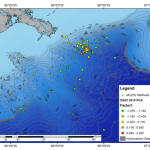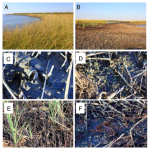To further add to the chipper pre-Thanksgiving mood (FOUR DAY WEEKEND, WOOHOO!!!), I’m pleased to bring you two announcements here at DSN.
Firstly, Sunday Oil Spill news roundups will become a weekly feature here on the blog. The impacts of the Deepwater Horizon spill will go on for years, but unfortunately the news coverage will continue to wane as the visual reminders fade. I’ll keep you in the know with all the latest scientific/political news related to the BP spill, succinctly summarized by yours truly.
Secondly, I’ll also be planning some more research blogging series on oil spill-related topics, along the same lines as the uber-popular discourse on dispersants.
But this time, there’s a twist: YOU tell me what you want to know. What questions have been nagging your brain? What hasn’t the mainstream media covered in enough detail? I’ll take the most popular topics, whip up a literature review, pour through my tome of notes from the Deepwater Horizon meetings I’ve attended, sprinkle in a bit of scientific commentary, and voila—hot from the oven, a couple of reader-requested blogging series. So give me your suggestions via the comment form below, or send me a mention @Dr_Bik on twitter. The first new series will be announced on December 1st…stay tuned!






I’ve tried to find some research out there, but haven’t had much luck: Would love to know about the effects of the oil, or of the dispersants, on the behavior or cognition of spill-affected animals. I can imagine it might affect navigation (and thus, migration and mating), or foraging behaviors (aside from the possible reduction in food availability), as examples.
Jason- I just spoke to a fisheries ecology manager who deals with tarpon, and he said reports are coming in from from the Panhandle that the tarpon moved in the opposite direction of their usual migration patterns this summer.
Interesting! Do they have any sense as to why? In other words, what’s the cognitive mechanism underlying tarpon migration, normally? (e.g. do they use visually or olfactory-guided navigation? magnetic fields? echolocation?)
To be honest, I’m not really sure. I’d really interested to see the data over the coming years to see just how much their migration may have been altered.
Two weeks ago, we had a public forum in Walton County Florida with FWC, DEP, Coast Guard, and other reps present. This was the first public meeting since July. Their basic message was “we tested, and there is no oil or dispersant in the water or in the marine life”…”if you can’t see it, it’s not there.” When pressed with their own data, they acknowledged that some recent tests have shown positive results for dispersant compounds (DOSS). They dismissed these findings as contamination from some other source such as cosmetics or hair care products. The Florida DEP program for water testing has been disbanded even though (perhaps because) their last round of testing had positive results in two locations. In the meeting, the DEP rep insisted that the dispersant compounds detected did not exceed human health safety benchmarks. When asked what the established human safety benchmarks for the dispersant compounds is they had no answer, and still do not. Has anyone seen any actual research about dispersants and public health?
This question may not be the hottest topic at the moment, but it is a question that has been bugging me for ages, and despite questioning “experts” in the marine life field, all I get is a “I dunno!”
I would like to know why it is that the largest of the marine creatures (e.g., the blue whale, the whale shark, etc.) are the ones whose food consists solely of the smallest – i.e., krill, plankton, etc.?
The only thing I have read that comes even close to partially answering this question was a report that the whale shark’s left(?) jawbone was much, much larger and stronger than the other; the theory was the jawbone developed that way in order to support the large quantities of water the whale shark had to filter through its system while feeding.
I would appreciate any answer you might be able to come up with. Thank you!